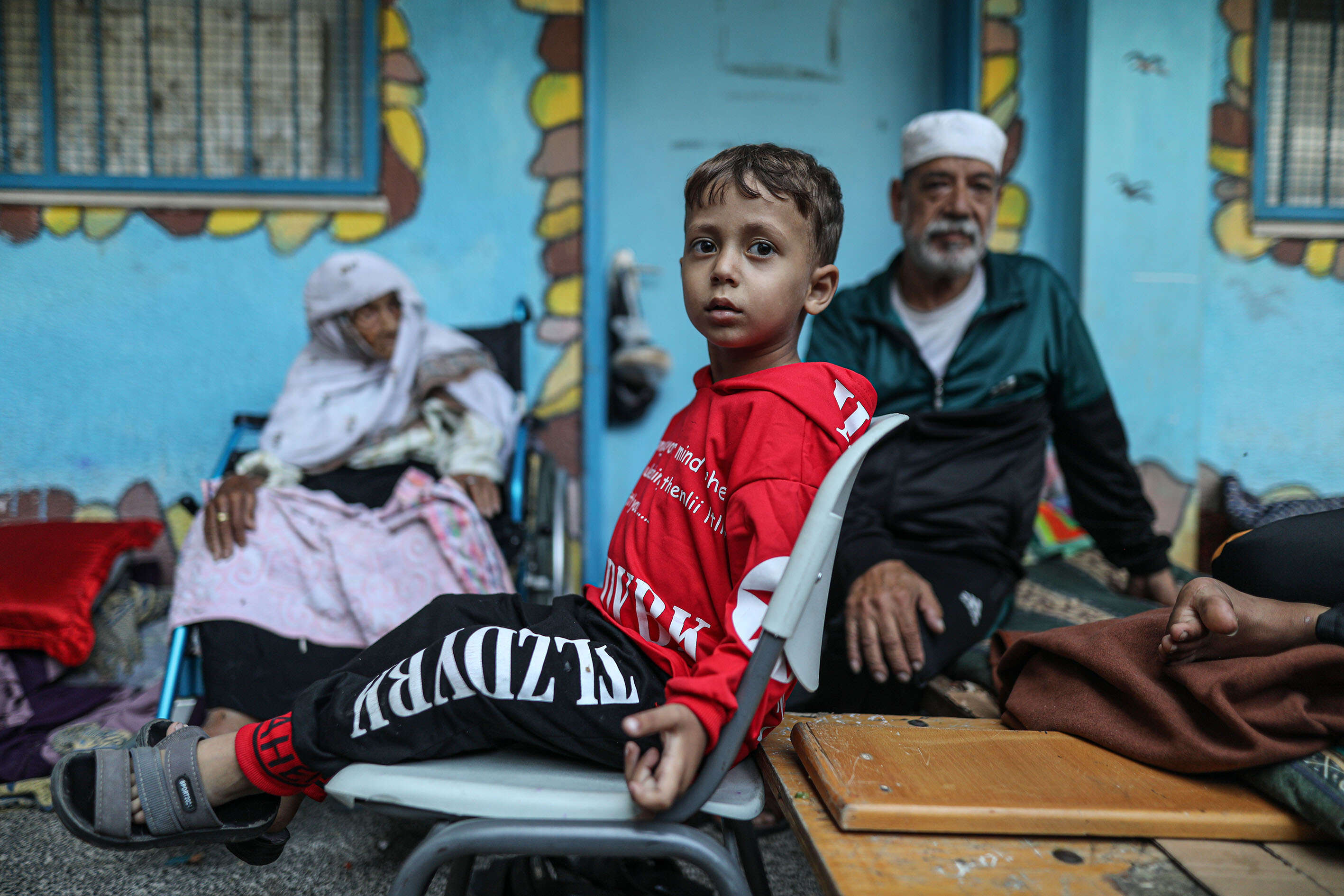
The collapse of Gaza’s health system
Attacks on hospitals, a blockade on humanitarian aid, and a rising number of civilians killed and injured by conflict have left Gaza’s medical system unable to cope.

Attacks on hospitals, a blockade on humanitarian aid, and a rising number of civilians killed and injured by conflict have left Gaza’s medical system unable to cope.
As the conflict between Israel and Hamas continues, Palestinian civilians are bearing the brunt of the trauma. Gaza is now the deadliest place for civilians and aid workers in the world. More than one hundred thousand Palestinian civilians have been either killed or injured due to Israeli military operations. Every day this number continues to rise.
Attacks on hospitals, limited humanitarian access and blockades on vital medical supplies have significantly hindered the capacity of Gaza's health care facilities to provide essential treatment to those in need. More than 3 million Palestinians are in urgent need of humanitarian assistance as the war in Gaza continues without a clear end in sight.
On October 7, 2023, following a deadly attack by Hamas on southern Israel, Israeli forces initiated airstrikes and ground operations in Gaza.
The conflict has resulted in severe destruction and widespread death and displacement throughout Gaza. 1.7 million Palestinians, about 75% of the population, are estimated to be internally displaced. Over 200 hostages were taken from Israel—many of whom remain held in Gaza.
Only 11 of Gaza’s 36 hospitals are even partially functional. Medical staff continue to treat patients with limited access to medical supplies.
Find out more about the crisis in Gaza.
Almost all of Gaza's population has been without access to essential food, clean water and health care since October 2023, pushing the population to the brink of famine. To date, there have been 28 reported deaths of children, along with a number of adult deaths, due to starvation and dehydration in Gaza.
As Gaza’s health crisis deepens, its health care system is increasingly strained and unable to meet the needs of Palestinians affected by war amidst attacks on health care and humanitarian aid workers, and a lack of medical supplies.
The IRC has warned of an imminent infectious disease outbreak in Gaza. Even with an immediate ceasefire, almost 12,000 people would lose their lives in Gaza as a result of disease. Nearly 90,000 could die of secondary health impacts alone should the conflict escalate further.
The health system in Gaza has been severely undermined as a result of the assault on its infrastructure, compounded by shortages of vital supplies and medical professionals. Despite life-threatening challenges, health care professionals work tirelessly in overwhelmed health care facilities, endeavoring to deliver care to patients in need.
More than 34,000 Palestinians have been killed and over 77,000 have been injured since October 2023. The IRC is also concerned about the escalating mental health and psychological toll on civilians, particularly children, who are grappling with the devastating impacts of war.
"These health care facilities are not built for mass casualty. And in fact, no hospital in the world is built for this kind of sustained severity of mass casualty, nor could any be able to sustain it,” says Dr. Seema Jilani, who deployed to Al Aqsa Hospital in Middle Gaza as a member of one of the IRC’s emergency medical teams.
As Gaza's health care system crumbles, the toll of civilian casualties, injuries and displacements continues to escalate. The only path to ensuring the safety of these individuals lies in an immediate and permanent ceasefire.
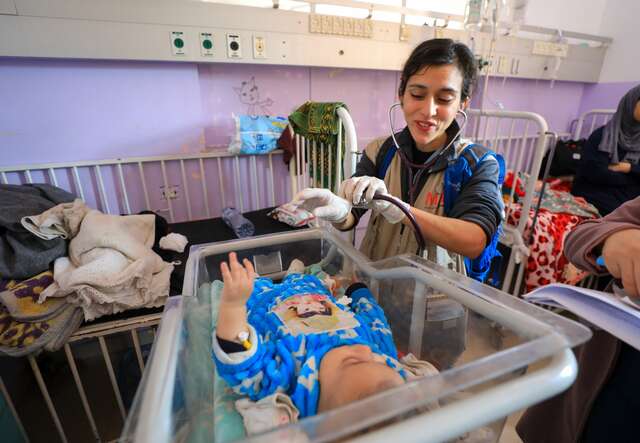
The Israeli blockade of food, water, fuel and essential medicines and supplies is inflicting immense suffering on Palestinian civilians, impeding the delivery of life-saving aid and jeopardizing humanitarian efforts.
Within the first six weeks of 2024, the Israeli military denied access to more than 50% of aid missions planned for north of Wadi Gaza and 25% for areas south of Wadi Gaza. Throughout April, an average of 187 trucks crossed into Gaza per day—about 37% of the pre-conflict aid delivery rates.
Humanitarian access to northern and central Gaza has declined due to delays at Israeli checkpoints, heightened military activity in central and southern Gaza, and threats to humanitarian personnel and sites.
Meanwhile, restrictions on movement, forced displacement, and personal tragedies have severely hindered the capacity of Palestinian health care workers to provide essential medical aid to the overwhelming number of people in need.
An Emergency Medical Team (EMT) operated with Medical Aid for Palestinians (MAP), the International Rescue Committee (IRC) and the Palestine Children’s Relief Fund (PCRF) have reported horrific scenes of patients dying from infections with evidence of serious malnutrition at the European Gaza Hospital (EGH) where they treated patients for two weeks.
“The EMT’s surgeons had completed successful complex vascular and orthopedic surgeries on patients, but some of the patients later died due to infections in the hospitals and the inability to provide post-operative care, explains Dr. Konstantina Ilia Karydi, an anesthetist in the EMT. “This is due to the intense security situation that forced health care workers to evacuate hospitals and hindered their access.”
Nearly 800 incidents of violence against, or obstruction of access to, health care have been recorded in Gaza since the outbreak of violence in October.
An attack on an ambulance approaching the Al Aqsa hospital killed four humanitarian aid workers on January 10th. A residential compound housing the IRC’s Emergency Medical Team, operated in partnership with MAP, was struck by an airstrike on January 18th, injuring several team members and causing significant damage to the building. These attacks are emblematic of other attacks on civilian, medical and humanitarian buildings and people in Gaza.
Since October, the Israeli military has conducted more than 400 attacks on health care facilities and personnel in Gaza, impacting every hospital in Gaza. More than 480 health care workers have also been killed and more than 160 others have been detained, according to the Ministry of Health. There have also been reported allegations of health care workers being subjected to torture.
The IRC is deeply concerned over reports of multiple mass graves found at Nasser Hospital in Khan Younis and Al-Shifa Hospital in Gaza City following the Israeli military's withdrawal from both sites.
“Some of the deceased were allegedly elderly, women and wounded individuals—with some found with their hands tied and stripped of their clothes,” said IRC vice president of emergencies, Bob Kitchen. “We echo the UN High Commissioner for Human Rights' demand for an immediate and thorough independent investigation into these incidents.”
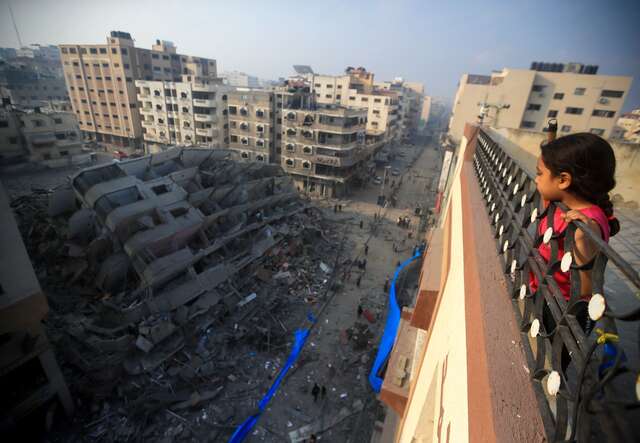
Hospitals, medical staff and civilians are all protected under international humanitarian law (IHL). Attacks on health care and humanitarian workers not only put lives at risk but also prevent the delivery of lifesaving services to communities in crisis.
It is critical that all parties uphold IHL which demands the protection of civilians and the infrastructure they depend on to survive. Hospitals, electricity and water plants must not be targeted. Authorities must ensure the basic needs of civilians—including access to water, food and medicine—are met.
Additionally, IHL prohibits the starvation of civilians as a method of warfare, while the Rome Statute of the International Criminal Court provides that intentionally starving civilians by “depriving them of objects indispensable to their survival, including willfully impeding relief supplies” is a war crime. Despite recent talk by Israel of scaling up aid in Gaza, the imminent famine shows that actions speak louder than words.
International organizations have called for an immediate and permanent ceasefire in Gaza and for all parties involved to respect international humanitarian law. They have also appealed for immediate humanitarian assistance to address the urgent needs of the displaced and injured. In response, several countries have pledged aid and assistance to Gaza, but much more is needed to address the scale of the crisis.
You can urge Congress to call for a ceasefire.
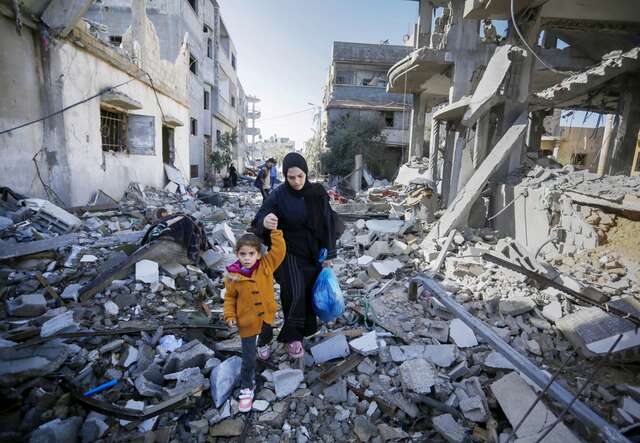
The crisis in Gaza has left a devastating impact on all children in Gaza. Over 14,000 children have lost their lives, while thousands more remain missing. More than 1,000 children in Gaza have suffered the loss of one or both of their legs, often undergoing amputations without anesthesia, and will need ongoing medical care throughout their lives.
Amid this crisis, wounded children often arrive at medical facilities feeling scared and alone,
lacking the comforting presence of their families. The high number of children without surviving family members seeking medical care has led to the creation of a new acronym—"WCNSF" (Wounded Child No Surviving Family).
In addition to physical injuries, the conflict has taken a toll on the mental health and well-being of these young survivors. Prior to the recent increase in hostilities, over 500,000 children in Gaza were identified as requiring mental health and psychosocial support. Currently, every child has experienced profoundly distressing events and trauma, characterized by extensive destruction and displacement.
Education across Gaza has also come to a grinding halt. The entire school-aged population—625,000 children—has lost access to education, with the majority of schools being used as shelters and almost 90% of schools damaged or destroyed.
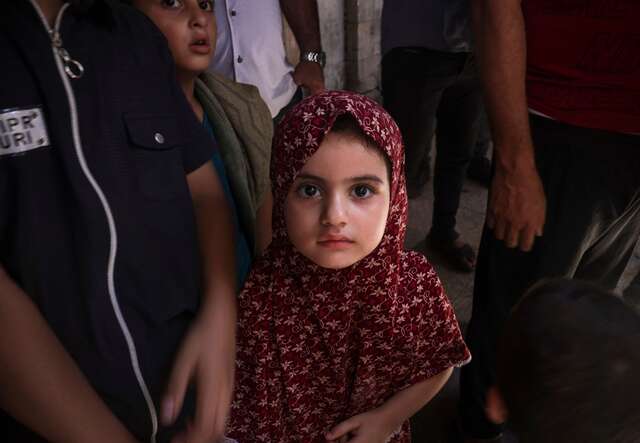
The IRC is closely monitoring and assessing the situation in the occupied Palestinian territory (oPt). Local partners have been leading the response in Gaza and we are supporting their objectives through financial, technical and operational support. Partner-led activities contribute to the IRC's emergency outcomes in health, basic needs, education and safety.
The IRC and Medical Aid for Palestinians (MAP) have deployed five successive Emergency Medical Teams to provide emergency and life-saving medical care, including direct medical care at hospitals, and the distribution of medical supplies and pharmaceuticals. The team, composed of trauma doctors, surgeons, pediatricians and disaster experts, are offering surge and relief support to hospitals and providing life-saving medical care to injured Palestinians. To date, our EMTs have delivered at least 219 surgeries and 636 consultations, including minor procedures and critical care.
In partnership with Anera, the IRC is working to provide essential mental health and psychosocial support to Palestinian children. We are utilizing a comprehensive approach that prioritizes the needs of children between the ages of 4 and 18, to implement therapeutic activities including play, art therapy and life skills training. Our activities are designed to empower children to cope with their experiences, express themselves creatively, and develop essential life skills for the future, thereby promoting healing, resilience, and emotional wellbeing. By fostering a safe and supportive environment, we aim to mitigate the long-term impact of the crisis in Palestine and have started providing psychosocial support services for 9,000 children between 4 and 11 years old and informal literacy and numeracy sessions for 1,200 children, targeting people sheltering in schools.
The IRC has also partnered with Nafs to establish a Mobile Community Center (MCC) that will enhance the access of marginalized people, mainly children, to their residential areas and provide them with Mental Health and Psychosocial services in the West Bank and Gaza strip. Our partnership with Nafs is expected to reach 5,000 children in the next few months.
The IRC has also procured or released 49 metric tons of pharmaceuticals and medical supplies which the IRC and our partners are distributing to support health facilities across Gaza. These include pediatric and psychotropic medicines as well as trauma supplies and are based on needs identified and coordinated across health actors working in Gaza.
We have also partnered with the Palestinian NGO, Juzoor for Health and Social Development, to address the health and mental health needs of those displaced and to provide access to basic services for children and families. Together, we are providing critical services, including health services, psychosocial support and cash assistance, in more than 20 shelters throughout Gaza. We expect to reach more than 30,000 Palestinians through our partnership with Juzoor in the coming months.
The International Rescue Committee (IRC) and Welfare Association (Taawon) partnered to combat the severe hunger affecting displaced families in Rafah, southern Gaza, where over one million people have been displaced and have sought refuge in what is considered Gaza’s last haven. Together, we delivered fresh food parcels to approximately 3,500 families between January and February 2024.
The IRC’s response in oPt draws on our global experience and expertise in emergency response, as well as our longstanding presence in the region. In 2022, IRC teams across Syria, Lebanon, Jordan, Iraq, Yemen and Libya helped 6.3 million people.
The IRC plans to scale its programming in Gaza as soon as a ceasefire is in place. The IRC will aim to work directly and through partners to provide nutrition, water, sanitation and hygiene, healthcare, and protection particularly focused on separated children.
Learn more about the IRC’s programming in the occupied Palestinian territory.
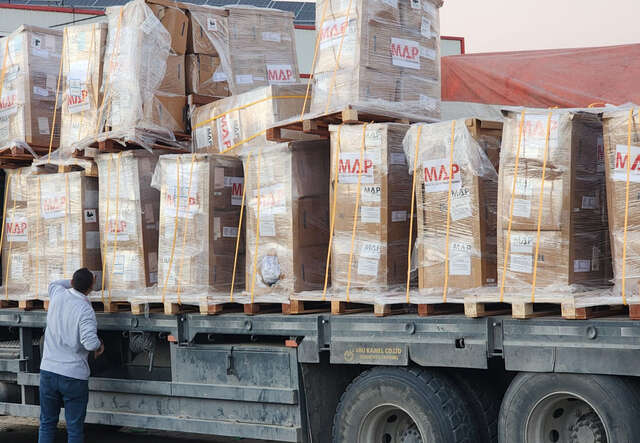
The IRC is working with partners to deliver critical emergency aid to families in Gaza and conflict zones around the world. Donate now to support our critical work. We are on the frontlines providing critical aid to crisis-affected people in more than 50 countries, including places on the 2024 Emergency Watchlist.
Read more about the top 10 crises the world can’t ignore in 2024 and download the full 2024 Emergency Watchlist report for profiles of all 20 crisis countries on the IRC's list.